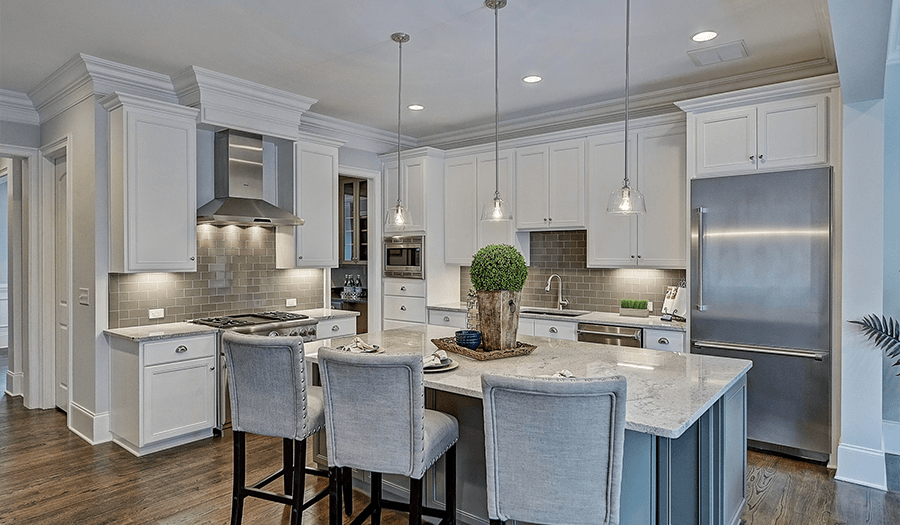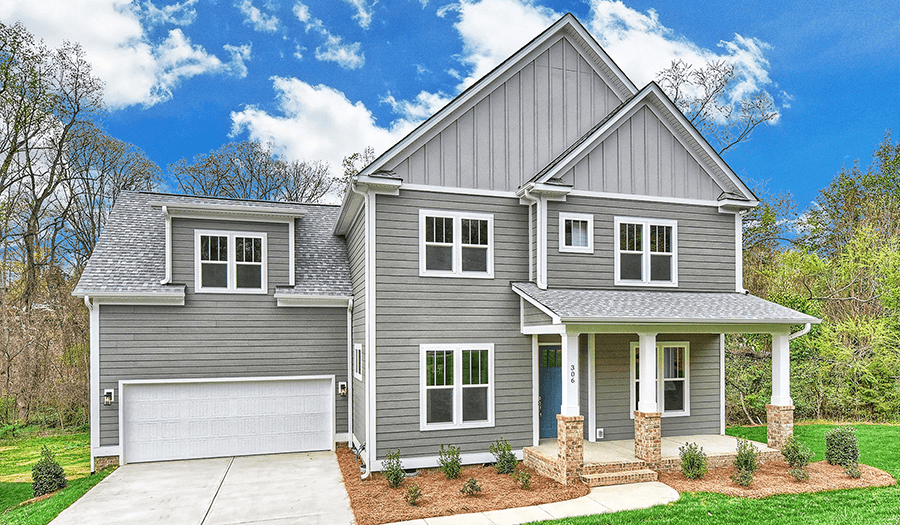If you’re thinking of building a brand-new home rather than purchasing a pre-owned one, you may be wondering how long the construction process is likely to take.
Building a new home involves a variety of steps, all of which do take time, such as planning, obtaining building permits, and the actual construction of the home. And, of course, there can be other factors that affect a normal build time as well.
The average time to build a new custom home is around 9-10 months after signing a contract to build. Many clients spend two months designing their home and selecting finishes, one month of final preparations and permitting and then six months of actual construction.
Of course, this timeline is dependent on everything being in place at the right time. Meeting with your builder and efficiently making decisions will help this timeline stay on track. Decisions you’ll need to make include the design and layout of the home, your finishes, the homesite on which you’ll build, and arranging for your initial investment.
Let’s dive a little deeper into the construction process.

What Can Affect The Construction Timeline?
Many factors can affect the construction time of your new home, some of which are out of the builder’s control. If there are factors the home builder requires your assistance to resolve, it’s always best to work with your builder as quickly as possible to ensure your construction remains on schedule.
Obtaining Building Permits
The builder is required to obtain building permits in order to have authorization to build your home. Since this is a third-party process, it is purely on the authorizing bureau to issue these permits in a timely manner.
The average time to obtain a permit is one month, although delays may factor in if there are zoning problems, disputes, or in the case of our global pandemic, reduced staff on-hand to process the paperwork.

Weather Conditions
Weather is a major factor in the construction time of your home. Things like concrete require specific temperatures and dry weather to be poured and cured. Strong winds or extreme temperatures make it unsafe for framers and roofers to perform their jobs.
However, once the home is framed and roofed, the interior work is far less likely to be affected by the weather.
Lot Topography
Depending on the homesite you select, there may be special grading required in order to ensure proper water run-off from your property. Additions like retaining walls, a basement foundation, or special grading requirements can slow down the construction of your home, since this step ensures water doesn’t pool in your home and cause damage.
Additionally, the builder could find obstructions that need to be removed such as larger rocks, tree stumps, or hard clay.
Changes Mid-Build
If you decide to change anything on your home during the construction process, there’s a really good chance it will cause delays to resolve those changes. If you decide to change a material you’ve selected for your finishes, the builder will need to order the new product and thus it won’t be on-site in time for the originally scheduled installation date.
For example, cabinets can take six to eight weeks to arrive once ordered, so if you change them mid-build you will find this delays your timeline. If you decide you need to change something about your home once construction starts, be sure to approach your builder as soon as possible to discuss the change and what will be affected.
Keep in mind that there will be certain points within the process where you won’t be able to make changes, and you need to respect that.
Copper Builders has safety measures in place for our team and have adapted our process to best work within guidelines.

How To Minimize Your Home’s Build Time
Although not everything that affects the construction timeline is within your (or the builder’s) control, there are measures you can take to ensure what you can control stays on track.
- Be open and communicative with your builder right from the beginning and all the way through your build so that you’re both in alignment when it comes to expectations. Most reputable builders have a collaborative software tool for keeping lines of communication open.
- Consider all the possible changes you want to make to the home before construction begins. It’s far easier to redraw plans than it is to tear down a wall.
- Get pre-approved for your mortgage, and do all the paperwork well in advance. The loan approval process has gotten extra cumbersome since the great financial crisis of 2008.
- Request walk-throughs in your home at appropriate stages of construction, such as when HVAC and plumbing have been installed but before drywall. This allows you to see if the functionality of your home is as needed before the next phase. Most builders plan these meetings and will notify of the best time to set them up during construction.
Building a new home is an exciting time; don’t let the potential hiccups become a focus. Patience and communication are the keys to a successful construction process, both on your part and the builders’. If you start the process knowing there can be some unexpected incidents, you’ll be ready to resolve anything that comes up and get the keys to your new home in just a few short months.















